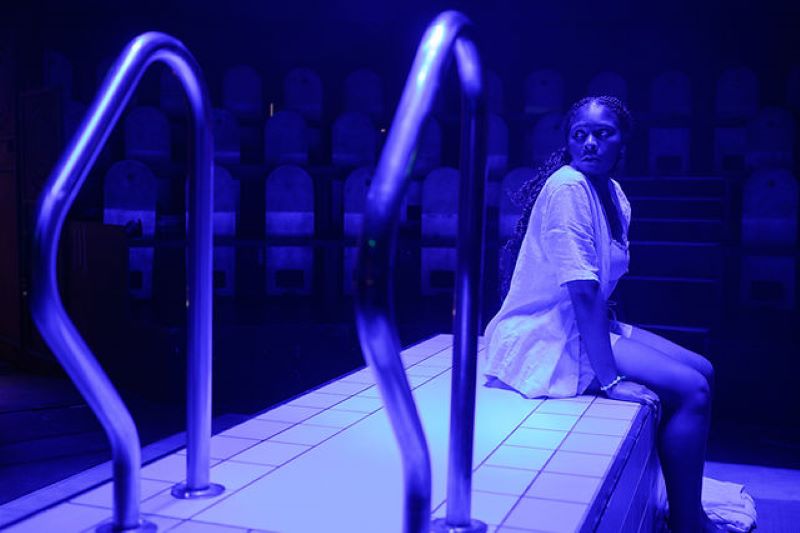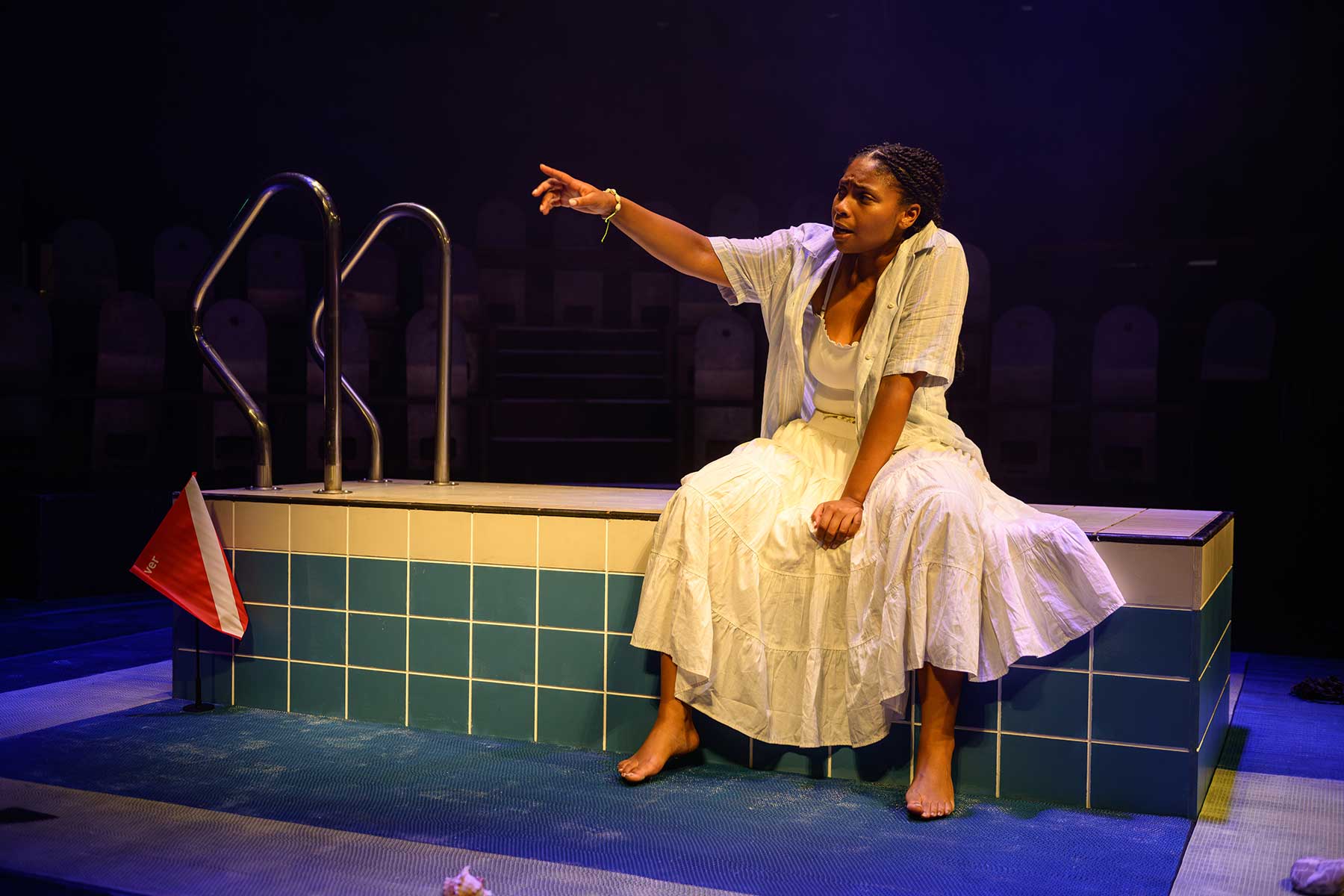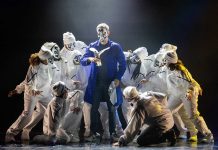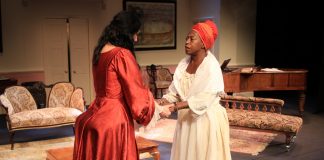
How I Learned to Swim is one of the most seamless ‘small’ productions that I’ve experienced recently. In respect to all necessary theatrical elements (e.g. storytelling, performance, staging, sound, lights, direction, dramaturgy’, etc.) having been put together within a minimalist/ one-person setting, this has to go down as one of the finest examples.
From Playwright Somebody Jones’ intelligently-layered script about the profound mundanity of love and loss to Frankie Hart’s rich, multi-faceted performance as protagonist ‘Jamie’, this piece is a great example of what can be achieved when each production and performance choice reaches and sustains that level of the – already top quality – source material.
The set is self-explanatory: the corner of a swimming pool is positioned in the middle of the auditorium, allowing the audience 360 degrees of access to the story told by sole actor Frankie Hart. On the face of it, it’s a simple story. Or rather, it is a tapestry of tales – about (non) swimming – that are weaved seamlessly and with great precision, until they form a magic carpet that elevates us beyond the confines of the staging, and into the theatre of our own imaginations – our own (once) loves and (near) losses.
It would be unfair for me to expose the narrative’s final destination. Suffice to say that the deeply emotional story-telling unfolds with a beautifully childlike playfulness – both literally and figuratively.
Playwright Jones deserves great credit for having crafted such a rich and evocative story with such a light and gentle touch.
Similarly, director/ dramaturg Emma Jude Harris makes a series of theatrical ‘home runs’ with her decisions regarding both pace and pathos; the dramatic outcomes appearing almost flawless in their execution.
Certainly, the choices made alongside lighting director Ali Hunter, sound designer/ composer Nicola T. Chang and associate sound designer Hattie North are superb; the character’s immersion into the water – and back again – being perfectly re-created through exquisite use of lighting and sound effects.
Designer Debbie Duru deserves kudos for her simple, immersive stage design and – bearing in mind the sheer number, effectiveness and seamlessness of the stage cues – I must also give a shout out to production manager and technical stage manager Josephine Shipp and deputy stage manager Leigh Arthur.

Actor Franke Hart (‘Jamie’) gets the main applause; and well-deserved it is. The actor effortlessly morphs and shape-shifts; embodying different characters with ease, as she takes us from one dramatic vantage-point – or spirit guide – to another. One such recurring character is ‘Μolly’, the female swimming instructor; as sensitive and secure as ‘Jamie’ is highly-strung and emotionally fragile; the actor effortlessly guiding ‘us’ – the audience – through the dramatic tension by holding fast to each character, arc and sentiment.
The physical, emotional and vocal choices made by the actor only strengthen the audience’s connection as the episodes unfurl. Added to her physical presence and dramatic range is her command of the space; engaging as she does with the varying sightlines – imposing herself, as she tells the story to all those present ‘in the round’.
By the end, we are left with a powerful piece of work; yet one both delicate and strong enough to allow room for our own stories to co-exist. An immense tale, very well told.
Need to know: How I Learned To Swim plays at Brixton House until 14 Sep 2024
- Access £15 tickets using code AFRIDIZIAK15 – valid until 7 Sep.


























